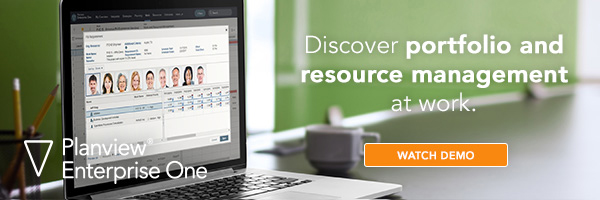
One of the specific goals of The Federal IT Acquisition Reform Act (FITARA) is to “promote transparency in existing IT assets and allow better planning, acquisition, and management of software licenses and IT resources.” Essentially, FITARA provides new ways to maximize the value of government IT and, at a basic level, answers the following:
- What do we have now?
- What should we have in an ideal future?
- How do we get there?
To better understand how you can achieve FITARA goals, let’s examine the goal and challenge of the Act, as well as how an integrated portfolio management solution is crucial to success.
The Goal of the Federal IT Acquisition Reform Act
The Federal IT Acquisition Reform Act (FITARA) mandates a pragmatic approach to wasteful IT procurement and management spend. Evolved from past mandates like the Clinger-Cohen Act that created the CIO position and put more scrutiny on IT investment, FITARA strengthens this position with the goal of improving the requirements to execution lifecycle.
The Challenge
Typically operating separately, agencies are now looking to close the gaps between the business, project management organizations (PMO), and Enterprise Architecture (EA) teams.
To reach agency goals, CIOs must ensure that today’s stakeholders achieve better connectivity and communication between groups. CIO’s now have the authority, and therefore the responsibility to ensure that there is visibility and accountability. If agencies fail to act, they will often have an incomplete picture of the supporting IT landscape, but also risk exposure to cyber security and technology non-compliance.
The Demand to Delivery Lifecycle represents a collective set of cross-portfolio data that breaks down disparate siloes and provides both operational and strategic information for key management decisions. The required information will span a range of portfolios and architectures including items such as capabilities, applications, technologies, people, and projects. The question CIOs must ask is:
How can the agency accomplish this transparency while keeping the information current, correct, and complete? [block quote]
[Insert screenshot]
Achieving FITARA Goals
Portfolio management solutions directly support the demands of FITARA with a number of use cases that:
- Present information in government terms – Data needs to be readily available to consume with information rolled up to the departmental or agency level, aligned to the respective capabilities as well as show status, cost, risk, and transformation roadmap.
- Establish compliance to technology standards – A standards baseline facilitates the mitigation of technology risk and includes both software and hardware roadmaps for current and future state planning as well as design patterns for technology reuse.
- Identify and reduce holistic operational risk – Anywhere that the IT landscape is out of compliance with supported manufacturer lifecycles is an ideal starting point. Deeper analysis of IT cost directly supports a more effective transformation and procurement process.
- Eliminate waste and duplication (rationalization) – Just knowing definitively what exists in the IT landscape is a start, then rationalizing hardware, software, and applications can follow. Furthermore, a view of the transformation roadmap shows where project conflicts exist.
- Visualize Cost – A view of cost across portfolios that includes operational and strategic assets and projects enables the CIO to make the most accurate decision making.
Integrated Portfolio Management Solution
Planview Portfolios provides an integrated PPM and EA solution that addresses all phases of The Demand and Delivery Lifecycle, from requirement to execution, and breaks down the communications firewall between project and strategic planners.
The solution does this by supporting end-to-end business processes that span multiple systems, internal organizations, and information portfolios. Business strategies drive change through projects that are related to the business capabilities, applications, and the technologies they impact. Furthermore, it helps agencies connect strategic objectives with financials while ensuring they have the correct resources in place to deliver.
Achieve a complete picture that brings together information from a range of systems and portfolios to drive costs down and improve decision-making. It is important to go beyond just compliance with the low bar of the mandate and thrive with a more complete and proactive vision. Get started today by registering for a free demo of Planview Portfolios, and start maximizing the value of Government IT.

![MassMutual Captures the Advances Enterprise Architecture Capabilities [Webinar]](https://blog.planview.com/wp-content/uploads/2018/08/MassMutual.gif)



